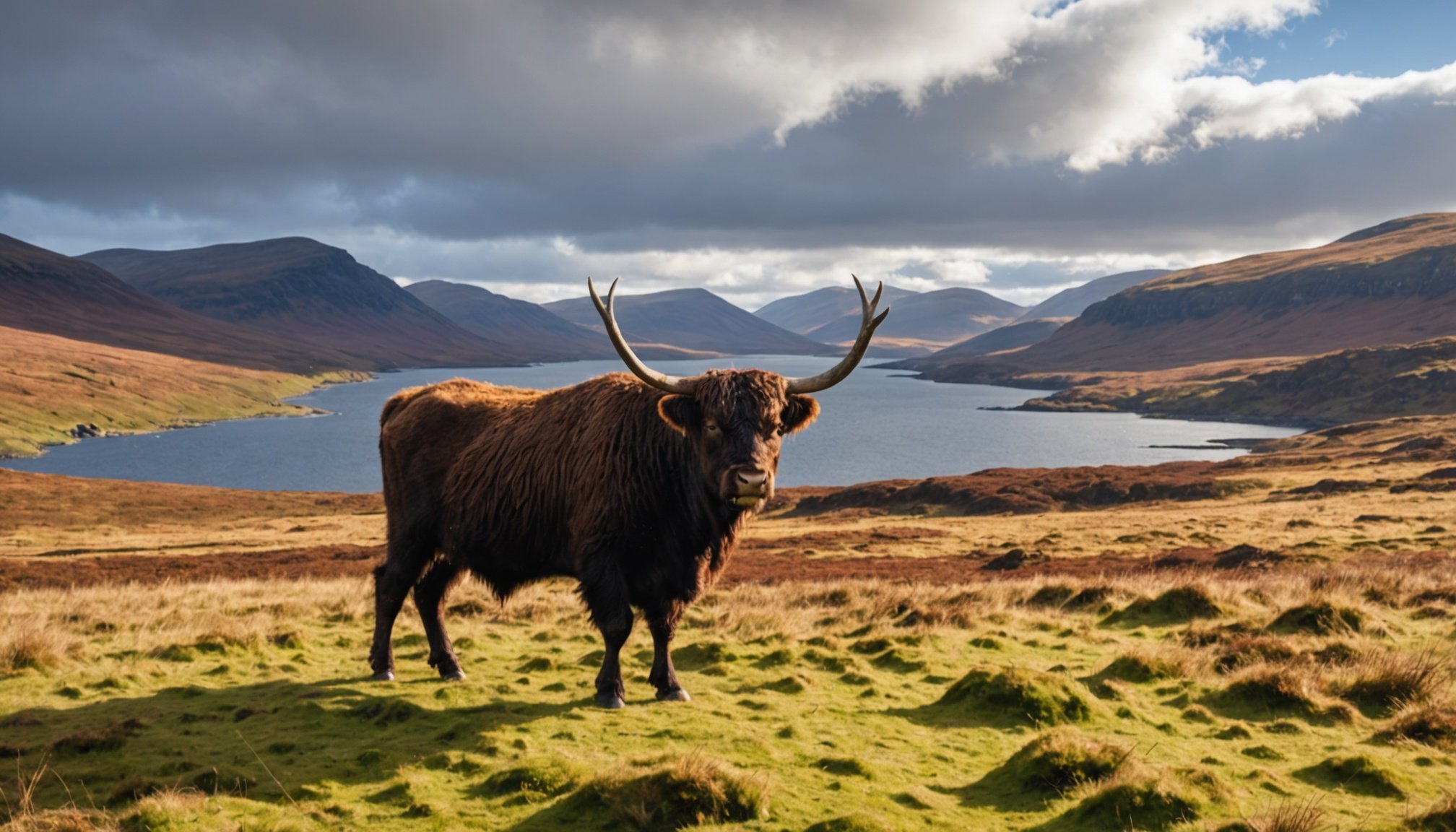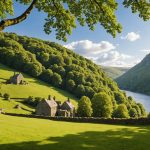Overview of Wildlife Viewing in the Scottish Highlands
Wildlife viewing in the Scottish Highlands offers a unique opportunity to connect with nature and observe a variety of animals in their natural habitats. The region boasts an impressive array of wildlife, from majestic stags and elusive wildcats to soaring eagles and playful otters. Diverse ecosystems make the Highlands a must-visit destination for nature enthusiasts. Planning a budget-friendly adventure in the Highlands can be both rewarding and cost-effective.
To make the most of your visit without overspending, consider leveraging budget travel strategies. For instance, exploring wildlife viewing areas on foot or using public transport can reduce expenses significantly. There are also numerous affordable accommodation options near wildlife hotspots that provide comfort without the hefty price tag. Packing essentials like reusable water bottles and portable snacks can further cut costs while ensuring an enjoyable experience.
In the same genre : Uncovering hay-on-wye”s literary treasures: budget-friendly tips for avid readers
With careful planning and a focus on affordable options, wildlife enthusiasts can embark on a thrilling journey through the Scottish Highlands without straining their budget. The experience of witnessing the region’s remarkable wildlife is a valuable and memorable adventure.
Best Locations for Wildlife Viewing
Exploring the best wildlife hotspots in the Scottish Highlands offers adventurers a chance to witness some of nature’s finest spectacles. The Isle of Skye provides stunning landscapes and opportunities to see sea eagles and otters. Accessibility is facilitated by local buses connecting the scenic spots, and the best time to visit is during the summer months when the weather is favourable.
Have you seen this : Uncover budget-friendly spa retreats in bath for thrifty travelers
Cairngorms National Park is another prime location, famous for its mountain hares and capercaillie. Train and bus services make this park accessible, and the early morning hours are ideal for wildlife encounters.
In the Lochaber Region, red deer and golden eagles are the highlight. The area is reachable via road or rail, and early autumn is recommended for spotting rutting stags.
- Key Tips:
- Ensure accurate travel planning.
- Check public transport schedules or consider budget-friendly car rentals for more flexibility.
- Plan visits during recommended times for optimal wildlife spotting experiences.
Strategically choosing locations enriches the wildlife viewing experience, allowing a closer, unforgettable connection to the region’s abundant nature.
Budget Travel Tips for Wildlife Viewing
Embarking on a wildlife journey in the Scottish Highlands doesn’t have to break the bank. Strategic planning around budget travel can ensure a rewarding adventure filled with unforgettable encounters with nature.
Considering transportation options is essential. Opting for public transport is often the most cost-effective choice. Buses and trains deliver access to many wildlife hotspots, reducing the need for costly car hires. For those seeking more flexibility, budget-friendly car rentals can provide tailored itineraries efficiently.
When it comes to lodging, the Highlands offer various affordable accommodation choices. From hostels to budget inns, these options are conveniently located near prime wildlife watching areas, ensuring comfort without the expense.
Packing wisely is another key aspect of reducing expenses. Essentials such as reusable water bottles, lightweight snacks, and weather-appropriate clothing enhance the experience by avoiding unnecessary spending. Such small adjustments accumulate savings, allowing travellers a more extensive exploration of wildlife across this breathtaking region.
By applying these cost-saving tips, nature enthusiasts can relish the Scottish Highlands’ allure without financial strain, embracing both nature and economical travel.
Suggested Activities for Wildlife Enthusiasts
Engaging in diverse outdoor activities enhances the wildlife journey in the Scottish Highlands. Guided wildlife tours offer structured exploration, providing insights into local ecology and ensuring a well-rounded adventure. These tours often include professional guides knowledgeable about the region’s biodiversity, promoting ethical wildlife observation. Exploring with experts guarantees a safe and informative experience, perfect for those prioritising learning without planning burdens.
Meanwhile, self-guided exploration allows enthusiasts to tailor adventures, choosing their pace and interests, suitable for independent travellers seeking flexibility. It encourages exploration of lesser-known spots, fostering a sense of discovery. However, respecting local wildlife and habitats is crucial; maintaining a safe distance and minimising disturbances ensures observation without impact.
Photography in natural habitats captures unforgettable moments. Practising best practices for photography, like using zoom lenses and maintaining silence, enhances images while preserving the environment. Photographers should prioritise capturing the wildlife’s natural behaviour without interference, focusing on patience and respect to achieve outstanding results.
By balancing guided and independent activities, wildlife enthusiasts can tailor their Highlands adventure, embracing both structured learning and spontaneous discovery while capturing the region’s essence through ethical observation.
Seasonal Insights for Wildlife Viewing
Wildlife viewing in the Scottish Highlands varies greatly with the changing seasons, offering unique observations and experiences year-round. Understanding the best seasons for wildlife activity is essential for planning a successful trip.
Spring is bustling with life, as many species emerge from hibernation and begin nesting. This period presents ideal conditions for witnessing wildlife migration and birth cycles, favouring encounters with young wildlife.
Summer ushers in peak viewing times, especially for coastal birds and marine mammals, drawn by the abundance of food. Temperate weather makes outdoor exploration more comfortable, although this season can be busier with tourists.
In autumn, fascinating behaviours unfold as animals prepare for winter. This includes the iconic deer rutting season, offering spectacular displays of strength and dominance among stags.
Winter, although colder, provides serene landscapes perfect for spotting red deer against the snowy backdrop, and elusive species like the pine marten.
Planning visits during off-peak months, such as late autumn or early spring, can maximise budget savings. With fewer tourists, travellers can enjoy a more intimate connection with nature. Season-specific events, like the return of migratory birds, add remarkable layers to these seasonal visits.
Personal Experiences and Itineraries
Exploring wildlife in the Scottish Highlands presents not only majestic sights but also personal stories that enhance the experience. Travellers often share how tailored travel itineraries allow varied and rich encounters. On a tight budget, one traveller described embarking on a three-day adventure. They started with the Cairngorms National Park, taking early morning trains to catch sight of mountain hares. Each evening, affordable inns provided comfortable lodging nearby.
Personal stories often highlight successful use of local guides. For a modest fee, these experts share hidden spots and tips to spot elusive wildcats or otters, enriching the adventure. They prove invaluable, especially for newcomers who aim to optimise their viewing time efficiently.
Sample itineraries also cater to different budgets, from weekend getaways to week-long excursions. Strategic planning can therefore prioritise locations like the Lochaber Region for witnessing the deer rutting in autumn, facilitated by budget-friendly car rentals for flexibility.
Within each experience, recommendations and local guide contacts emerge as crucial, ensuring both safety and an educational journey. Drawing on these stories, future wildlife enthusiasts can craft adventures that are both memorable and cost-efficient.











